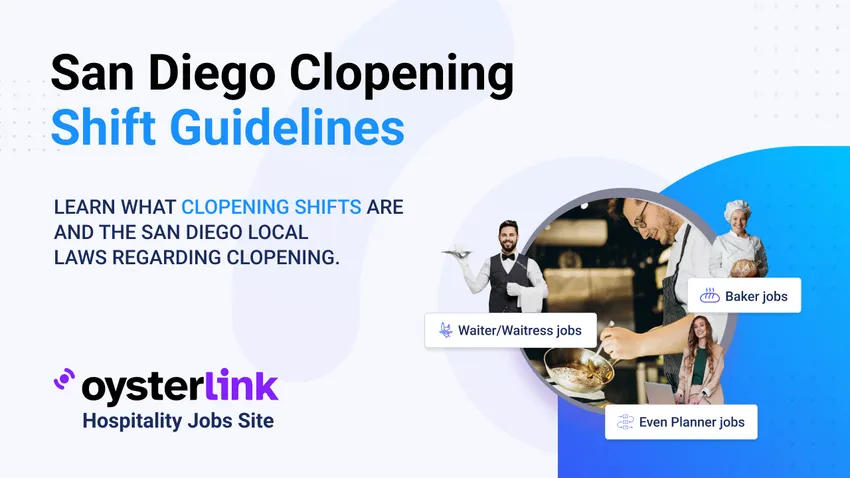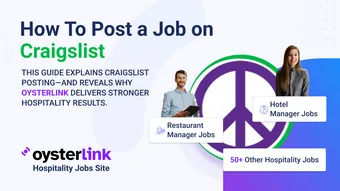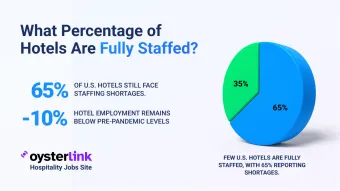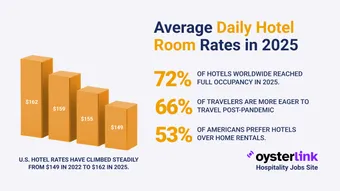San Diego Clopening Shift Guidelines: Key Takeaways
- San Diego has no local laws specifically regulating clopening shifts; California state law generally permits such scheduling.
- California does not require a mandatory minimum rest period between shifts for most industries except certain sectors like healthcare.
- Employers are encouraged, though not legally required, to allow adequate rest (such as 10 hours) between shifts to ensure employee health and productivity.
Clopening shifts—working closing then opening shifts back-to-back—are common but can cause fatigue. This article explains San Diego's rules and advises on best practices to meet 10-hour rest guidelines.
Understanding these scheduling practices can help employers avoid burnout and maintain a healthier workplace despite limited legal restrictions.
For help building reliable schedules and teams, see our restaurant staff hiring guide.
1. Understanding San Diego and California Clopening Shift Guidelines
In San Diego, there are no specific local laws that regulate clopening shifts, meaning the practice of scheduling employees to work a closing shift immediately followed by an opening shift is generally permitted.
California state labor laws do not mandate a minimum rest period between successive shifts for most industries. This means employers can legally schedule back-to-back shifts without a required break, as long as other wage and hour laws are followed.
However, exceptions exist in certain industries. For example, healthcare workers on 12-hour shifts are subject to regulations requiring at least eight consecutive hours off after a 24-hour period worked.
What Are Clopening Shifts?
Clopening shifts refer to an employee closing a business late at night and then opening it early the next day, often with only a few hours of rest between.
This practice is popular in retail and hospitality but can lead to fatigue, reduced productivity, and increased safety risks.
To understand the impact on well-being, review hospitality burnout statistics.
Clopening commonly affects bartenders—see the bartender job description to align expectations.
2. California Labor Law on Rest Between Shifts
California law generally focuses on meal and rest breaks during shifts but does not impose explicit requirements on rest time between shifts outside specific industries.
For example, healthcare industry regulations require 8 hours off between shifts under certain conditions, but these do not apply broadly.
This regulatory gap means many employers have discretion in how they schedule shifts, including clopening.
Exceptions for Certain Industries
- Healthcare: Employees working 12-hour shifts must have at least 8 consecutive hours off after a 24-hour period to reduce fatigue risks.
- Other industries: May have union contracts or specific agreements requiring rest periods.
For the majority of industries in San Diego, no minimum rest period is mandated, but good practice supports allowing sufficient rest.
3. Best Practices for Avoiding Fatigue in San Diego Clopening Shifts
Even though not legally required, employers should consider scheduling practices that promote at least 10 hours of rest between shifts.
Benefits include:
- Reducing employee fatigue and errors
- Enhancing overall workplace safety
- Improving morale and productivity
Here are some best practices employers can adopt:
- Plan schedules ahead: Avoid scheduling employees for a closing shift immediately followed by an opening shift.
- Communicate with employees: Ask about their availability and preferences to reduce burnout.
- Implement fair shift rotations: Rotate closing and opening shifts among employees to distribute workload evenly.
- Use scheduling software: Employ tools that can flag insufficient rest between shifts and help managers plan better.
Some operators experiment with a 4-day workweek to improve rest and retention.
Scheduling policies are typically led by managers—review the restaurant manager job description for key staffing duties.
Employee Health Takes Priority
Supporting adequate rest safeguards employee well-being, reduces the risk of accidents, and minimizes absenteeism, ultimately benefiting the business.
Thoughtful scheduling can also reduce employee turnover and training costs.
4. Legal Considerations for San Diego Clopening Shift Employers
Employers should remain aware of applicable laws and potential risks even if California and San Diego do not mandate rest between shifts.
Compliance tips include:
- Adhering to wage and hour laws: Pay all hours worked, including overtime if applicable.
- Understanding industry-specific regulations: For healthcare or other regulated sectors, follow mandatory rest periods.
- Monitoring employee complaints or claims: Address fatigue or scheduling disputes promptly to avoid legal issues.
Implementing voluntary policies aligned with the 10-hour rest guideline can help create a defensible best practice standard.
Avoid compliance risks from working off the clock when closing and opening duties overlap.
Kitchen operations also play a role in staffing—see the kitchen manager job description for oversight responsibilities.
5. Resources for San Diego Employers on Shift Scheduling and Labor Law
To stay informed and compliant, employers can consult these key government resources:
- California Department of Industrial Relations — For labor law compliance and updates.
- California Labor Code — Official statutes governing employment relations.
- California Code of Regulations, Title 8 — Industry-specific regulations including healthcare shift rules.
San Diego Clopening Shift Guidelines: Conclusion
While San Diego and California laws do not require minimum rest periods between consecutive shifts for most workers, clopening shifts can negatively impact employee health and safety.
Employers should voluntarily implement scheduling policies that allow at least 10 hours of rest between shifts to reduce fatigue and promote productivity.
Using available state resources and following best practices will help employers balance operational demands with employee well-being effectively.
For role-specific expectations during opening and closing, consult the server job description.










Loading comments...